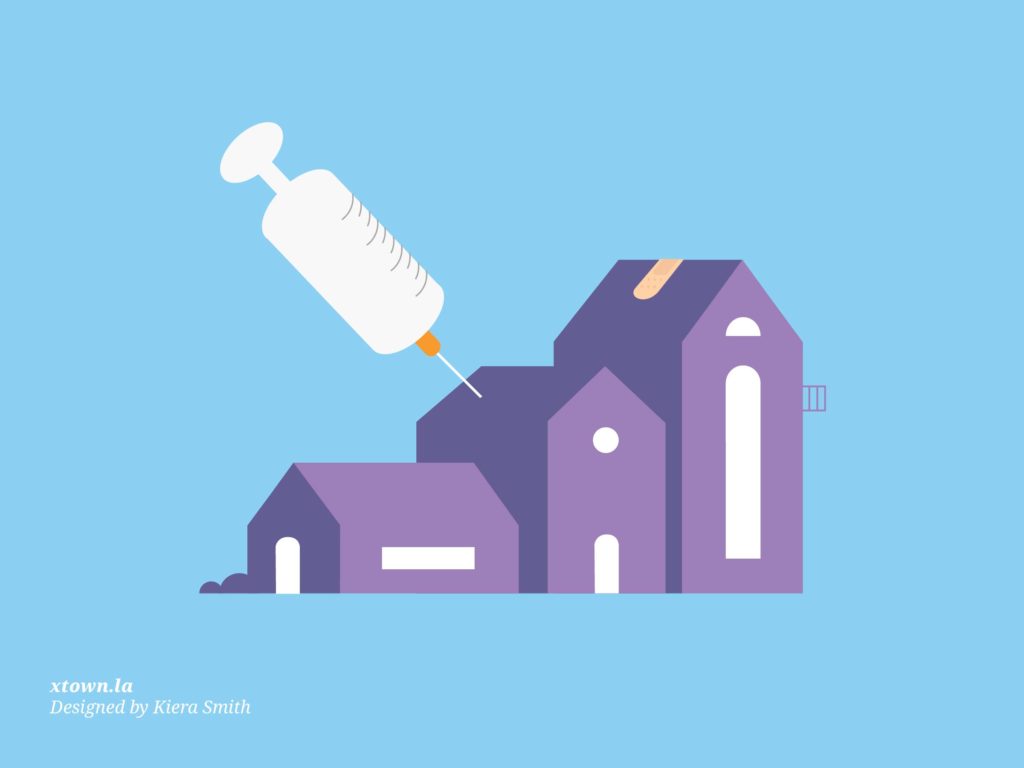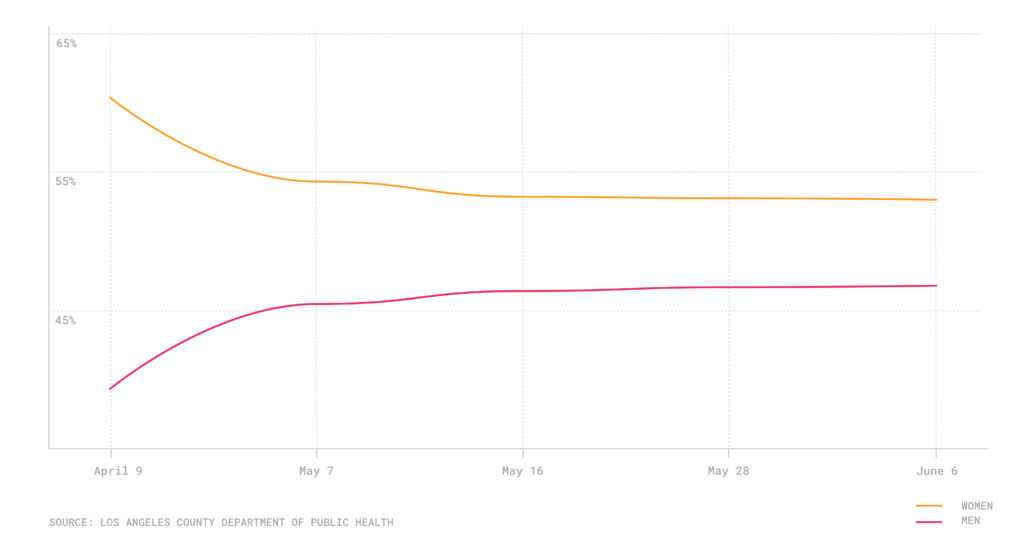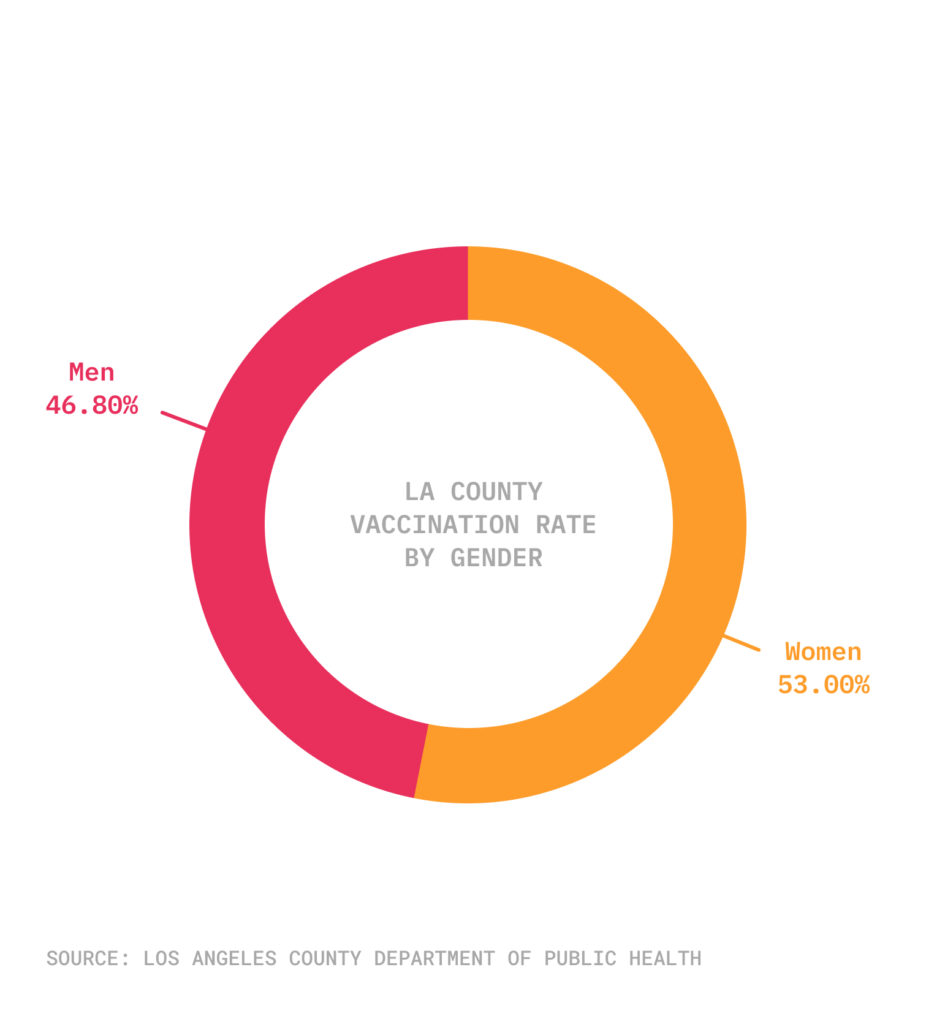Men are finally catching up on coronavirus vaccinations

Two months ago, there was a significant gender discrepancy in local coronavirus vaccination rates. According to the Los Angeles County Department of Public Health, on April 9 more than 60% of county residents who had received at least one dose of a vaccine were women. Just under 40% were men.
The gap has been narrowing steadily ever since. As of June 6, Department of Public Health data revealed that 5.4 million people have received at least one dose. Of that, 2,873,807 recipients (53%), were women and 2,534,306 (46.8%) were men. Gender was unknown for 0.2% of the recipients.
Coronavirus vaccination rates in Los Angeles by gender, April 9-June 6

A total of 9.6 million doses have been administered. Department of Public Health data shows that 67.5% of women have received at least one dose, compared to 62.3% of men.
The figures show that men have actually outpaced women in the number of doses received in the past two months. On April 14, the gender gap stood at about 640,000 doses. Now, the difference is approximately 340,000.

The current figures put the county closer in line with national statistics. The Centers for Disease Control and Prevention reported that through June 7, of the 171.3 million U.S. residents who have received at least one dose, 48.4% are women and 42.9% are men. (Gender data was available for 91.3% of people with at least one dose.)
Robynn Cox, an assistant professor of social work at the University of Southern California and a fellow at the USC Schaeffer Center for Health Policy and Economics, points out that even though the gap is narrowing, it is difficult to know why any significant divide remains. She referred to a March Pew Research study showing that only 66% of women intended to get a vaccine, as opposed to 72% of men.
[Get COVID-19, crime and other stats about where you live with the Crosstown Neighborhood Newsletter]
“There’s sort of this paradox in terms of why aren’t men getting vaccines at the same rate as women, even though these studies have suggested that women seem to be more hesitant,” Cox said.
She added that the time required to schedule an appointment and then get the vaccine could also play a role in the discrepancy. That was the case for Omar Khan, a security guard who lives in New York City and received his first coronavirus vaccine dose at the end of May.
“There weren’t many vaccine sections near my area and all required a schedule by appointment which would take too much time,” he said. “The one at the city college was within walking distance and there wasn’t a line when I went there.”
Another possible factor, Cox explained, is that women have disproportionately lost jobs during the pandemic, so they may have had more time to wait in line initially. With supply now generally exceeding demand, more people are able to get their vaccination when they want.
Still, Cox acknowledged that in the time of a pandemic, people are learning on the fly.
“All of this is just our best guess essentially, because of how quickly this is all happening,” she said.
How We Did It: We examined publicly available data on coronavirus vaccinations from Jan. 1-June 6, 2021, from the Los Angeles County Department of Public Health, the Centers for Disease Control and Prevention, and the National Women’s Law Center, along with studies from Pew Research.
Interested in our data? Check out the Crosstown coronavirus interactive map or email us at askus@xtown.la.






